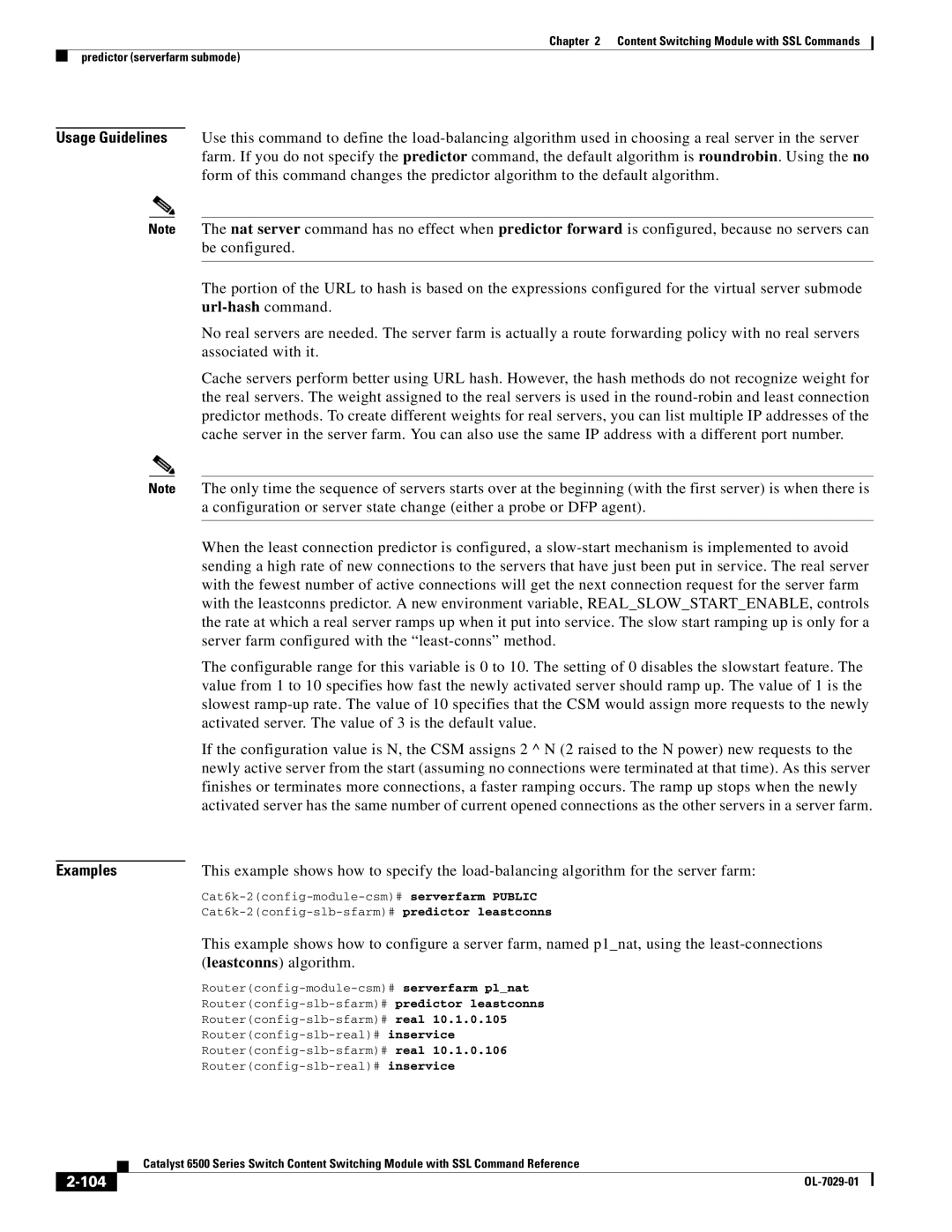
Chapter 2 Content Switching Module with SSL Commands
predictor (serverfarm submode)
Usage Guidelines Use this command to define the
Note The nat server command has no effect when predictor forward is configured, because no servers can be configured.
The portion of the URL to hash is based on the expressions configured for the virtual server submode
No real servers are needed. The server farm is actually a route forwarding policy with no real servers associated with it.
Cache servers perform better using URL hash. However, the hash methods do not recognize weight for the real servers. The weight assigned to the real servers is used in the
Note The only time the sequence of servers starts over at the beginning (with the first server) is when there is a configuration or server state change (either a probe or DFP agent).
When the least connection predictor is configured, a
The configurable range for this variable is 0 to 10. The setting of 0 disables the slowstart feature. The value from 1 to 10 specifies how fast the newly activated server should ramp up. The value of 1 is the slowest
If the configuration value is N, the CSM assigns 2 ^ N (2 raised to the N power) new requests to the newly active server from the start (assuming no connections were terminated at that time). As this server finishes or terminates more connections, a faster ramping occurs. The ramp up stops when the newly activated server has the same number of current opened connections as the other servers in a server farm.
Examples | This example shows how to specify the |
This example shows how to configure a server farm, named p1_nat, using the
| Catalyst 6500 Series Switch Content Switching Module with SSL Command Reference |
|
